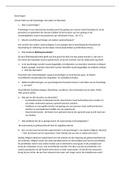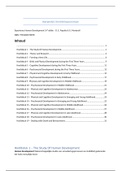College aantekeningen
Academic Skills 2: Designing Social Research - (Video)Lectures Notes, ISBN: 9781849201902 (2020/2021)
- Instelling
- Rijksuniversiteit Groningen (RuG)
Notes of the (video)lectures (knowledge clips) from Academic Skills 2.
[Meer zien]














